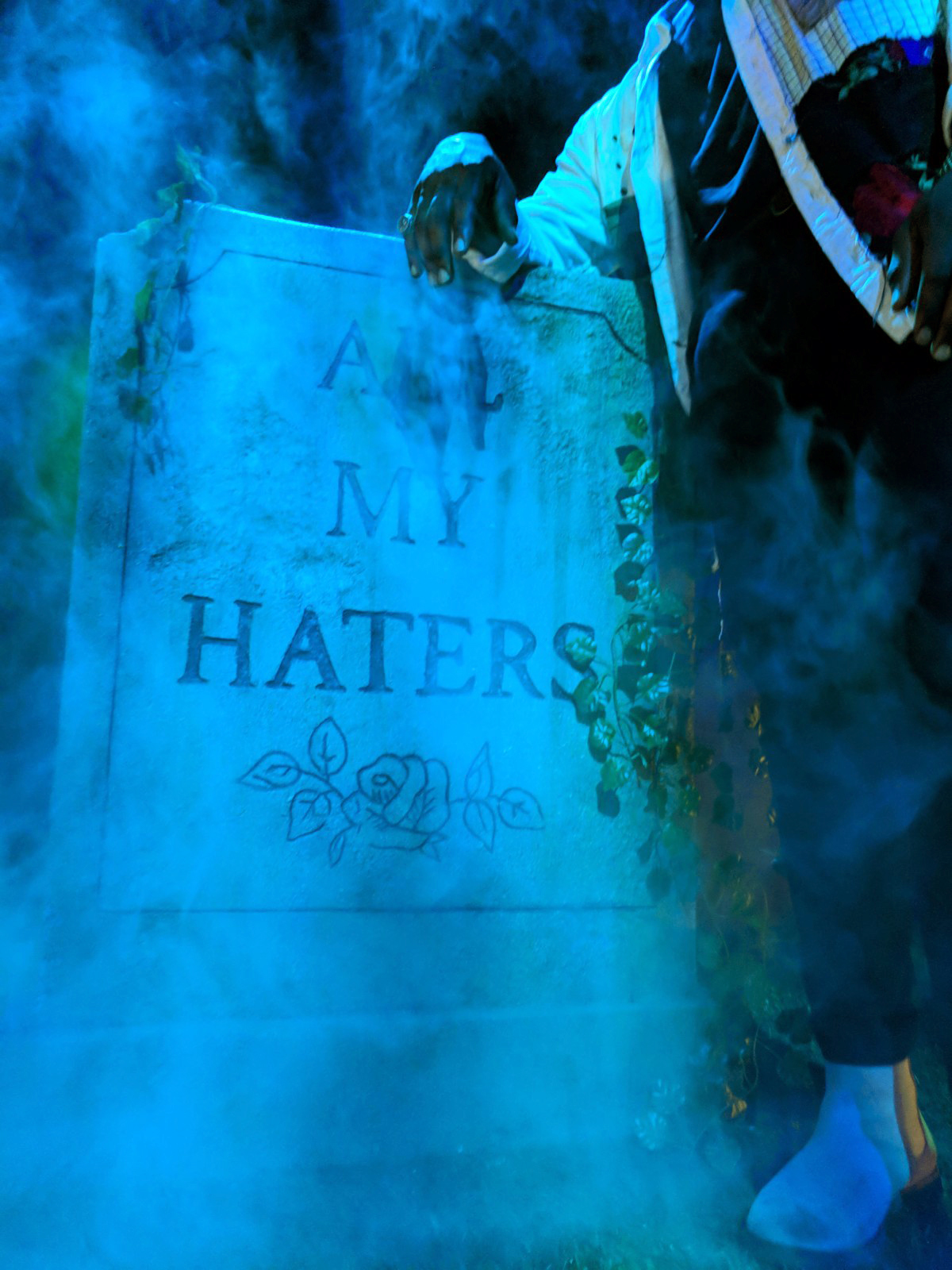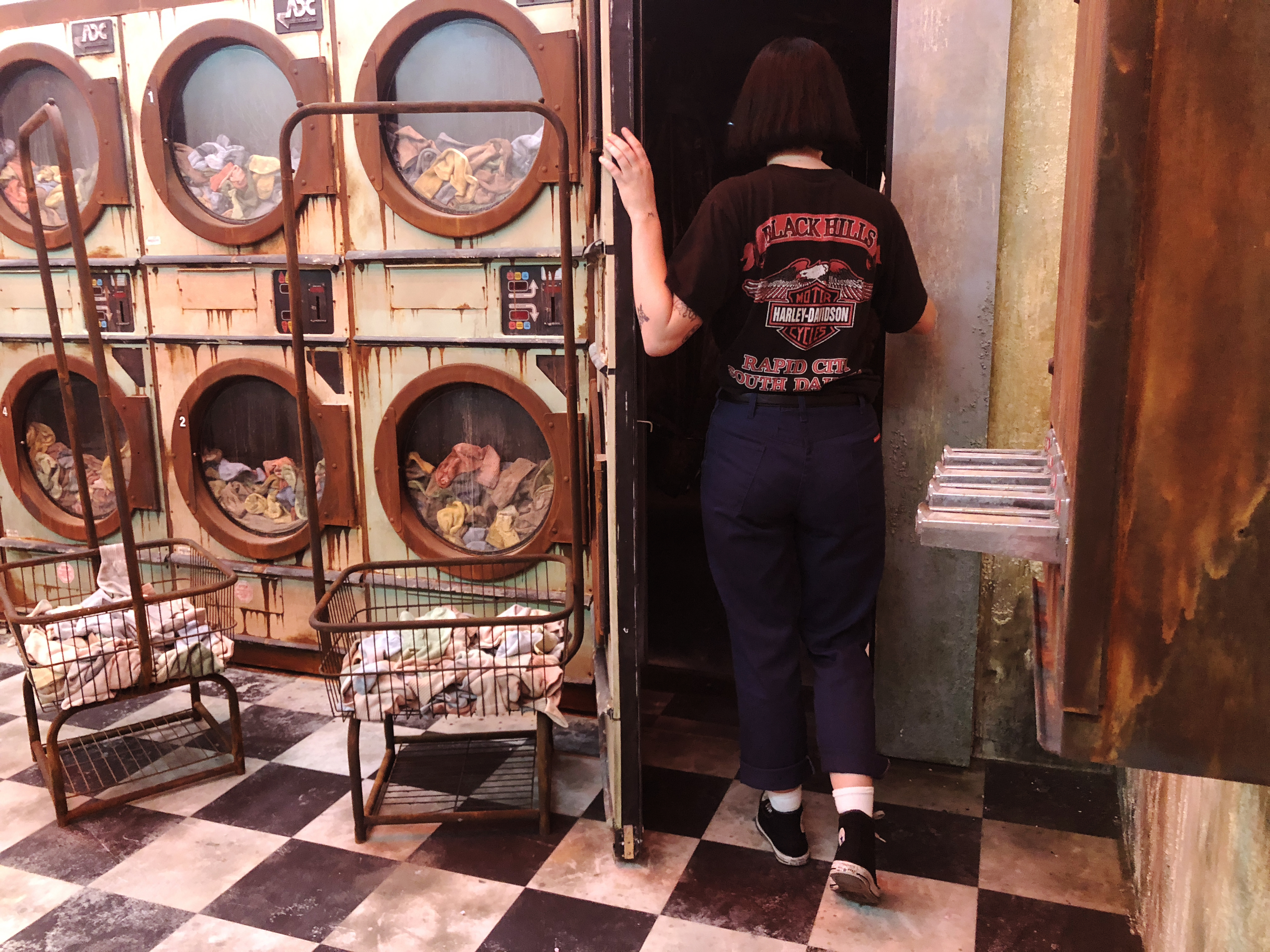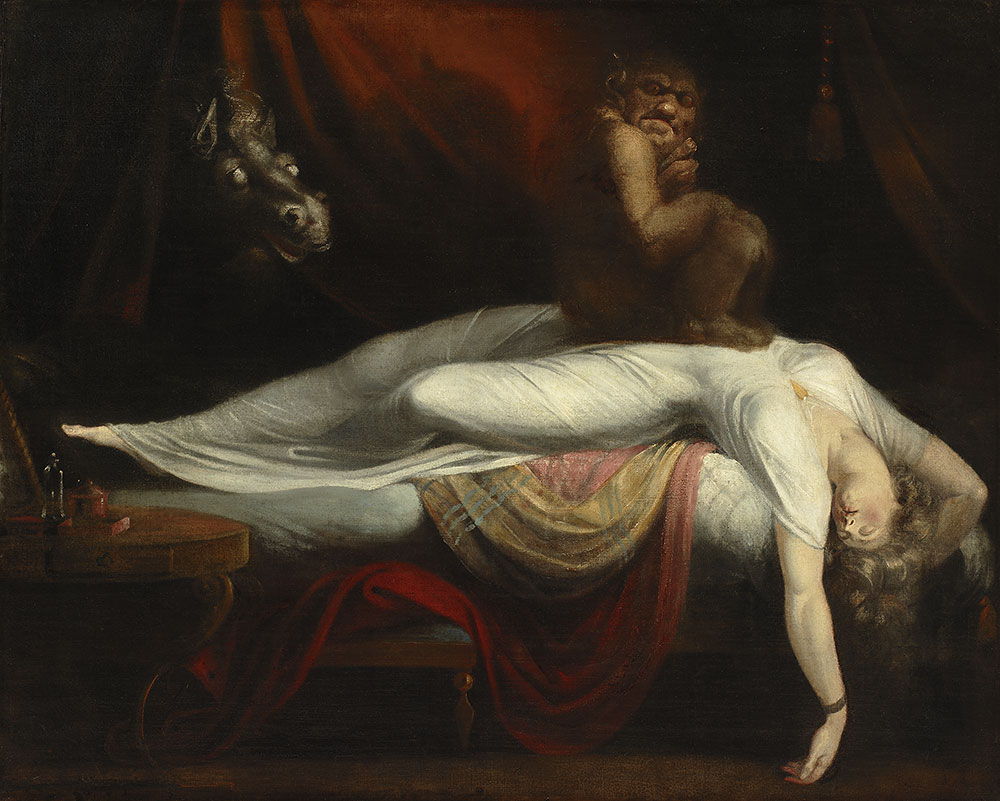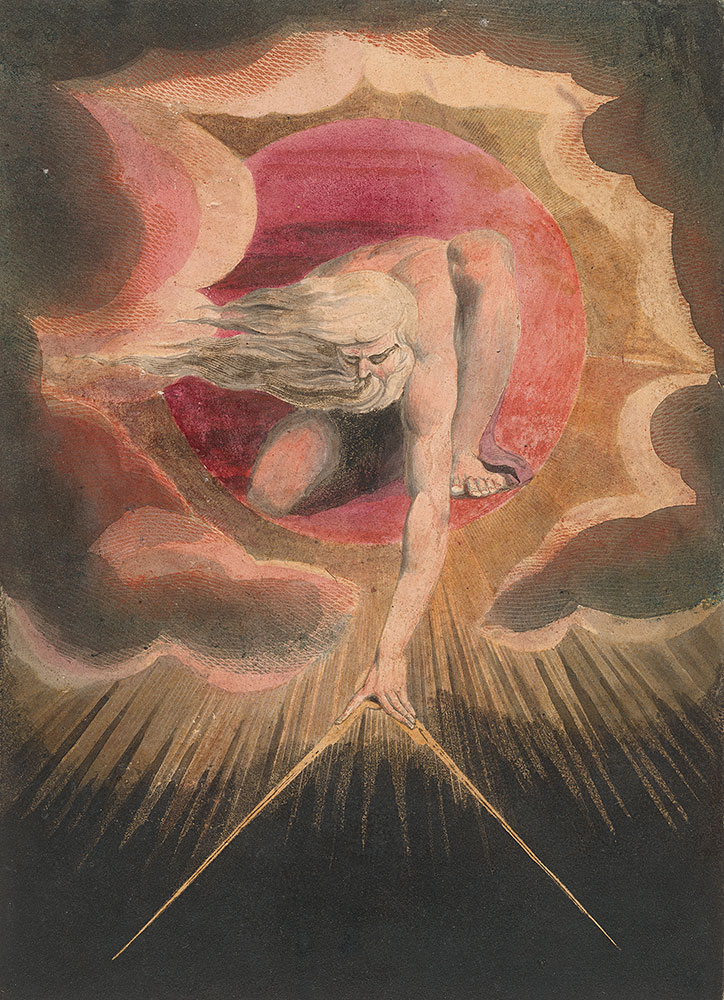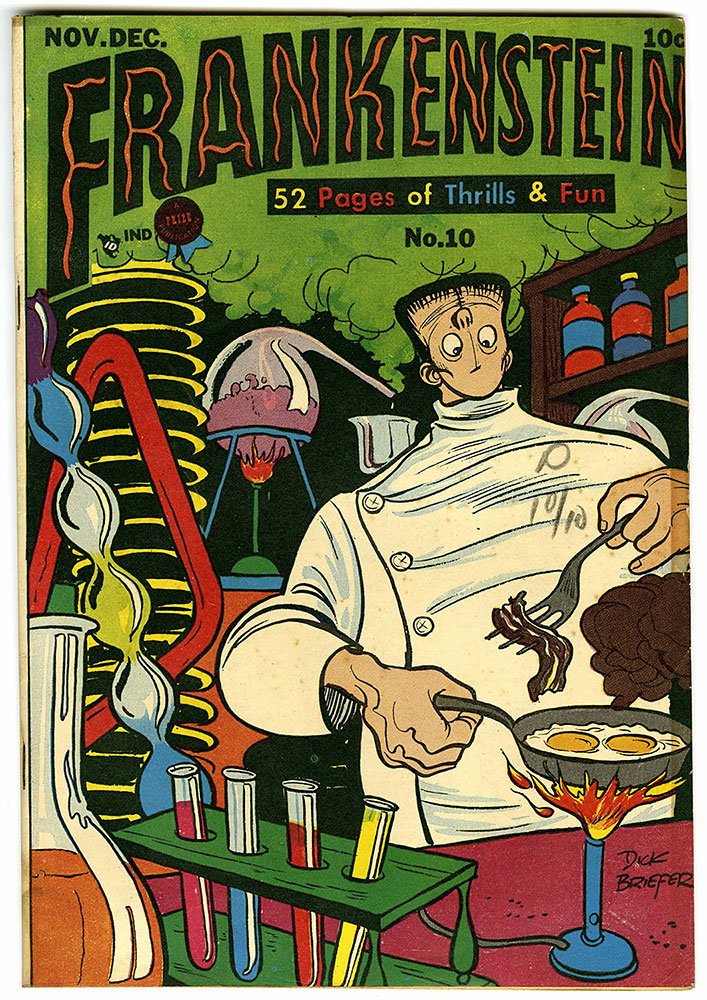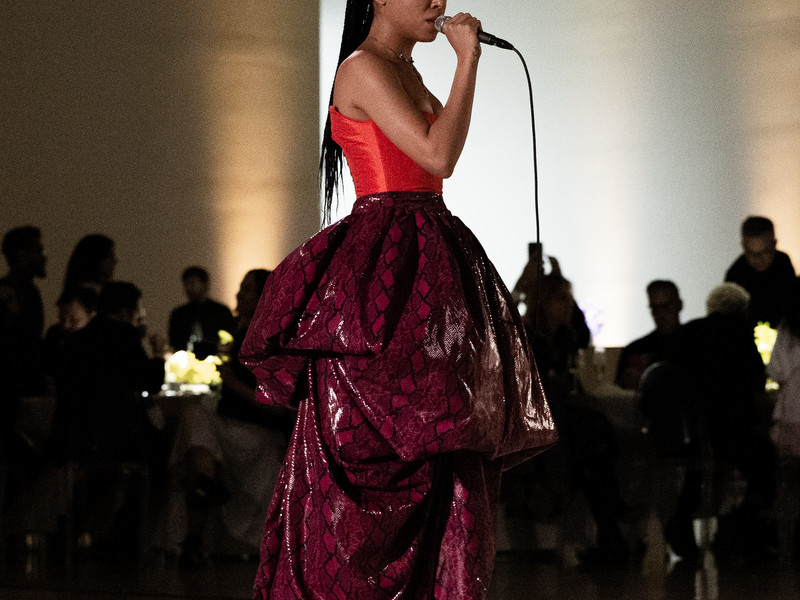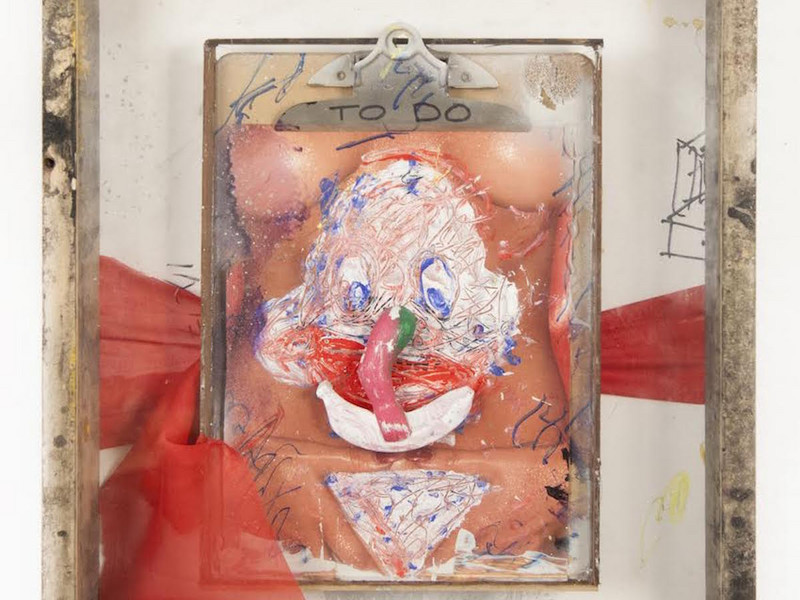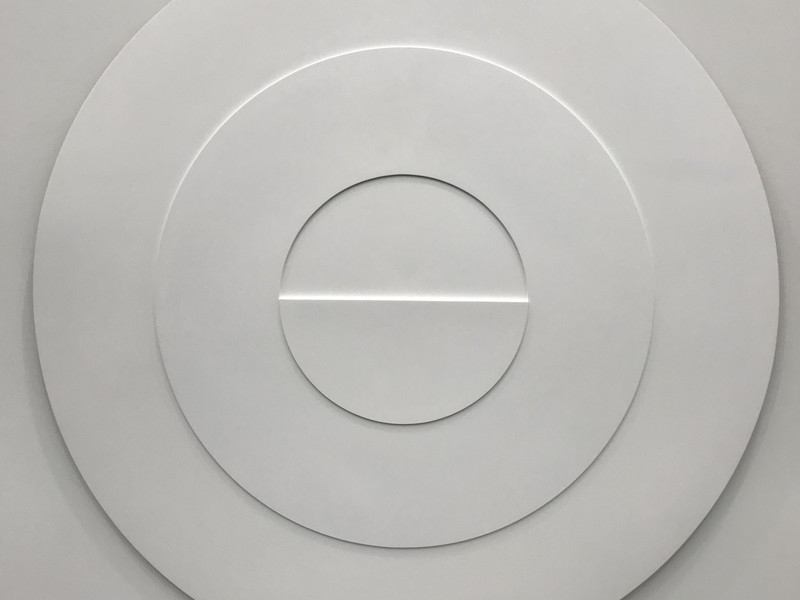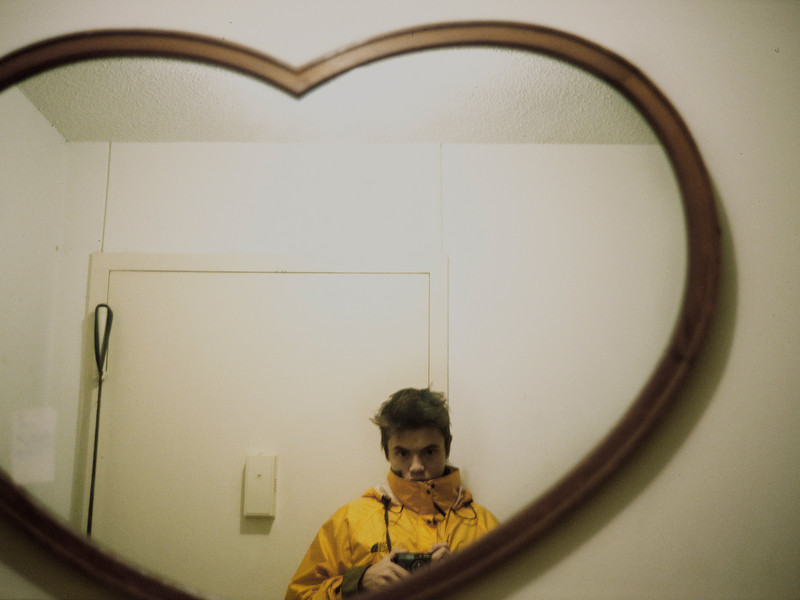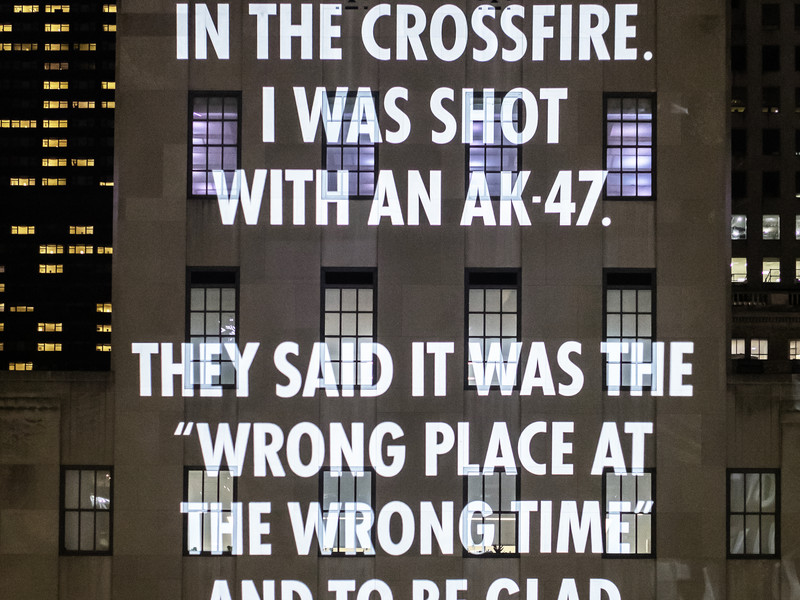Nightmare Machines
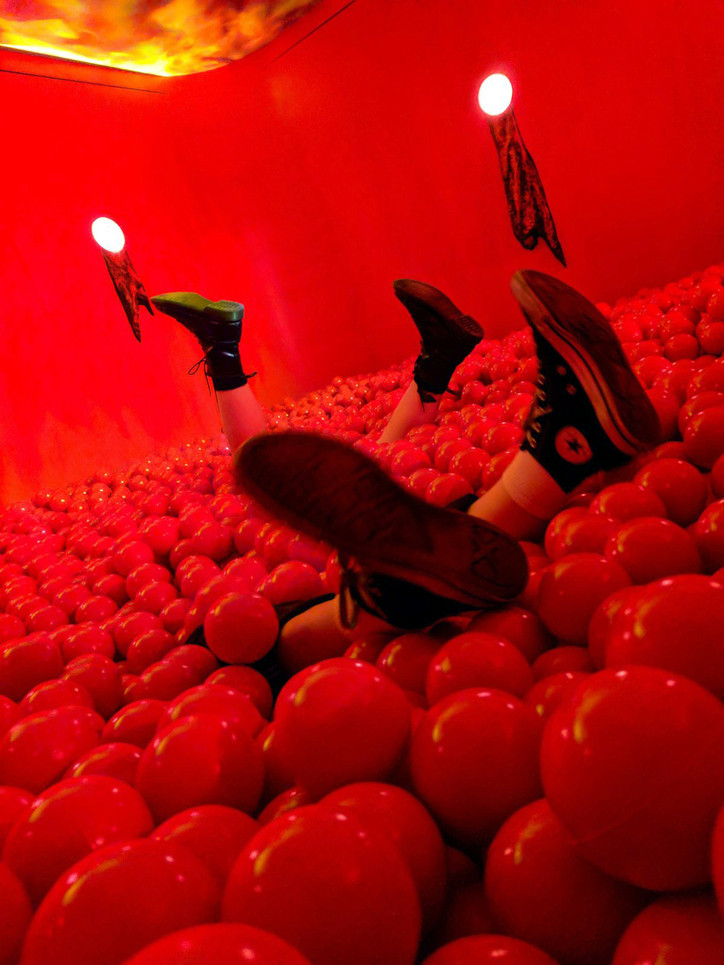
I would say she’s managing the balancing act with a certain amount of visionary millennial flair: the concept is extremely simple, which makes it approachable, fun, and cool. “If you can’t explain it in a sentence,” she said to me when I commented on this elegant simplicity, “then it’s too complicated to sell.”
All the rooms are designed by her personally, and the Nightmare Machine was a delightful twist on the original Dream Machine concept—the floorplan was the same, and some of the rooms were simply a hellish version of those in the original Dream Machine, which pays homage to its own history as a project. In the most popular room, the mock laundromat, I commented that it was almost like a video game—Paige illuminated part of her creative process, explaining that the layout is meant to resemble the strange architecture of dreams, when we’re in a place we recognize but at the same time, it’s different.
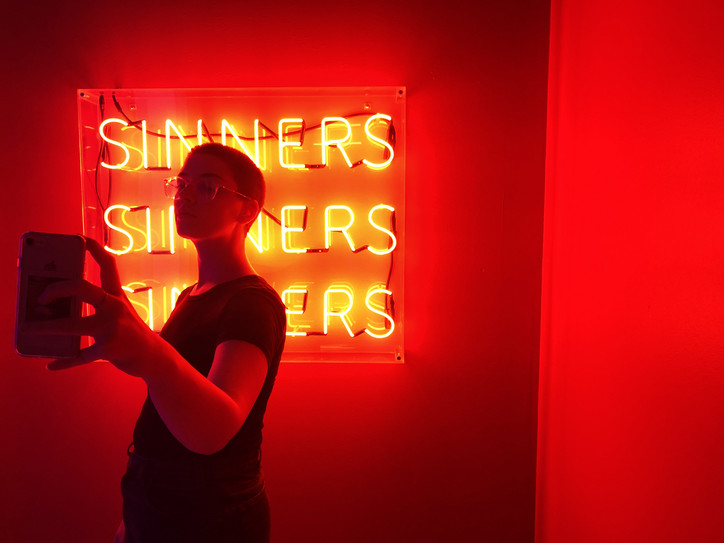

The rooms are, as I’ve said, designed for the viewer to take psychedelic Instagram selfies, and therefore are almost less about the imagery within the rooms themselves and more about creating an environment to envelop the viewer—like sets which are empty until we fill the space with the most interesting missing link: ourselves. This postmodern reliance on viewer interaction is what makes the project, for me at least, so curious, so provocative. It stands in direct opposition to the far-removed art of a traditional installation; for example, It’s Alive! Frankenstein at 200, the current main exhibit at the Morgan Library and Museum, plays into the same Halloween-themed low-brow appeal to draw in a crowd, but includes works from William Blake and one of my personal favorites, "The Nightmare," painted by Henry Fuseli in 1781, along with a walk-through history of the Gothic in literature and art, which, all in all, presumably appeals to a more high-brow intellectual impulse.
But does it, really? Is it somehow “better” to walk around reading wall texts for hours and leave feeling overwhelmed and sleepy? Is it “worse” to romp around taking Instagram pictures in fun sets designed for that very purpose, sharing your experience through the current definition of reality: social media? Perhaps. But it’s an interesting play on the function of art in society, to say the least, and the accusations being hurled at installations such as Nightmare Machine feel awfully similar to those aimed at the avant-garde in the days of the Academy.
Leaving Nightmare Machine leaves you wanting more—the challenge for Paige Solomon is how to get art cred for her wonderful little project. To take it to another level of wonder seems inevitable, and it will be marvelous to see how she does it, if only for the 'gram.
Photos courtesy of Nightmare Machine and The Morgan Library and Museum.
'Dream Machine presents Nightmare Machine' will be on view through October 31st, 2018. 'It's Alive! Frankenstein at 200' will be on view through January 29th, 2019.
